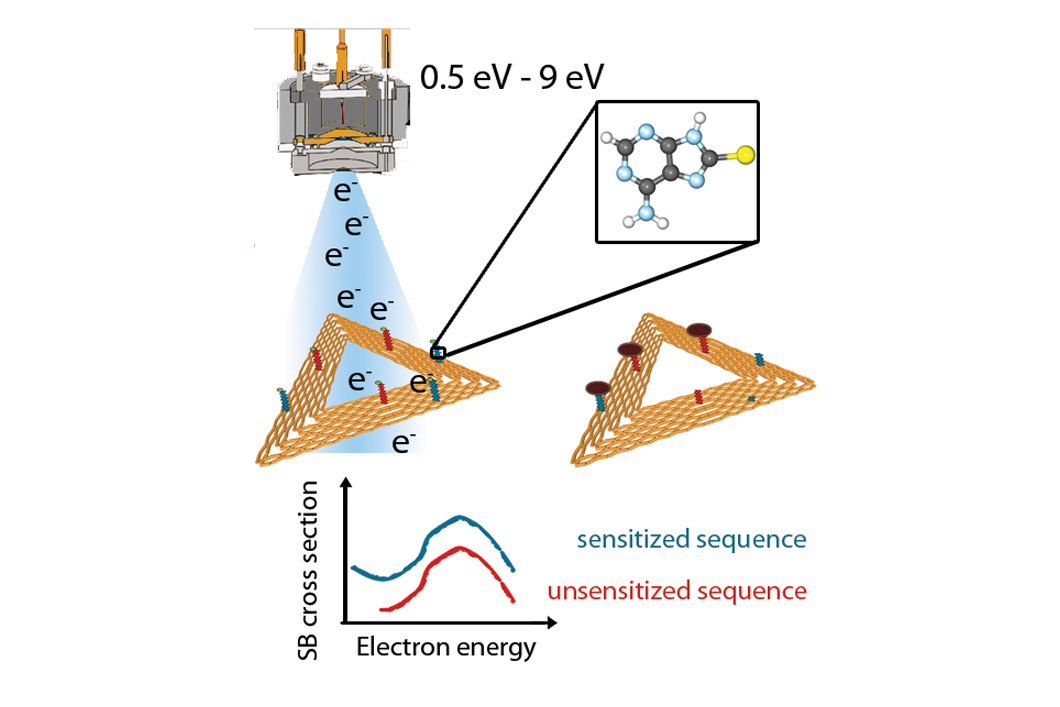
The Principle of DNA strand break detection with DNA origami substrates
Source: BAM, Department Analytical chemistry; reference materials
For cancer radiation therapy, so-called radiosensitizers are used to increase the reactivity of the DNA, the carrier of genetic information, towards low energy electrons. The aim is to enhance the number of DNA strand breaks at specific energies in order to destroy diseased tissue as efficiently as possible while at the same time, minimizing the damage of healthy tissue by radiation therapy. At BAM, the research team of Junior-Professor Dr. Ilko Bald used DNA-Origami nanostructures to determine successfully the energy dependence of the absolute cross-section of strand breaks of oligonucleotides modified with the radiosensitizer 8-bromoadenine.
A comparison of the results with studies of the dissociative electron attachment to the halogenated nucleobase 8-bromoadenine in the gas phase demonstrated that most of the DNA strand breaks are caused by resonances in the energy region of about 7 eV. These observations shed a new light on the processes resulting in DNA strand breaks by low energy electrons. These findings will have a considerable impact on the search for potential radiosensitizers for cancer radiation therapy.
Resonant formation of strand breaks in sensitized oligonucleotides induced by low-energy electrons (0.5–9.0 eV)
Robin Schürmann, Thupten Tsering, Katrin Tanzer, Stephan Denifl, S. V. K. Kumar und Ilko Bald
Angewandte Chemie International Edition 2017, 56, DOI: 10.1002/anie.201705504


